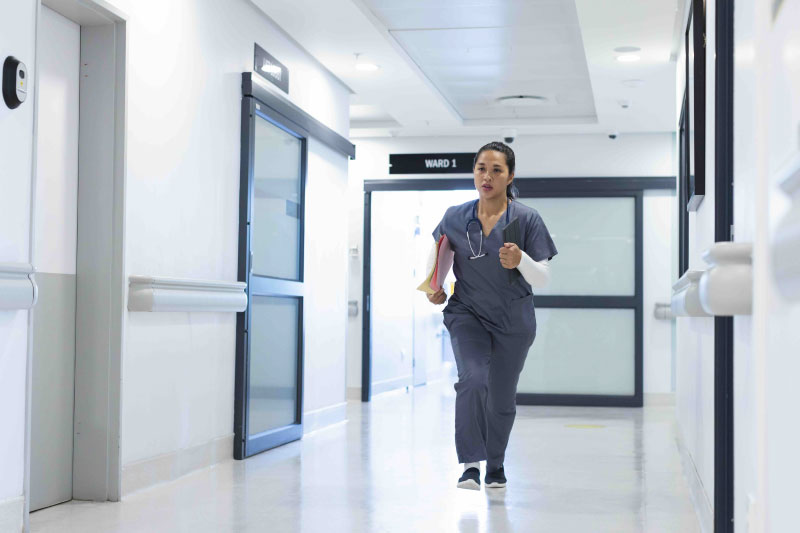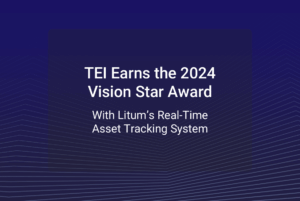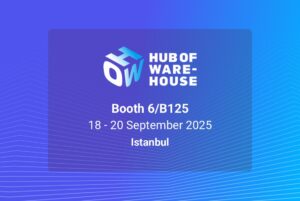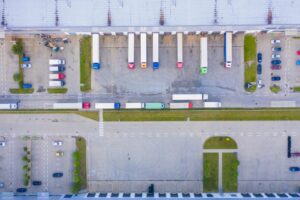Table of Contents
Healthcare settings are often marked by high-stress incidents, with safety being a paramount concern for professionals within this field. A staggering 75% of workplace assaults in the US occur in healthcare environments, contributing to significant workforce absenteeism and escalating the urgency for protective measures.
The lack of proactive solutions for staff duress in healthcare settings poses significant risks. Up to 90% of healthcare workers have been exposed to workplace violence, including verbal and physical abuse. However, these episodes are grossly underreported. For instance, only 30% of nurses and 26% of emergency department physicians report incidents of workplace violence, often due to the belief that such violence is “part of the job” or because of uncertainty about what constitutes violence.
Recognizing the severity of the issue, the Joint Commission issued an alert on violence prevention in the healthcare workplace, deeming it a sentinel event and underscoring the critical need for enhanced crisis response measures. In response, Real-Time Location Systems (RTLS) have become instrumental in bolstering staff safety, offering a technologically advanced solution to an increasingly complex problem.
RTLS in Healthcare Staff Duress
Healthcare professionals face unpredictable risks daily, making staff safety a top priority. Real-Time Location Systems (RTLS) in healthcare staff duress provide an advanced solution for protecting employees by enabling instant alerts and precise location tracking during emergencies. With RTLS, hospitals and healthcare facilities can respond faster to threats, reduce response times, and enhance overall workplace security. By leveraging ultra-wideband (UWB) or RFID-based tracking, organizations ensure their teams feel safer, leading to improved staff retention and operational efficiency. Investing in RTLS for staff duress is a proactive step toward a safer healthcare environment.
The Evolution of Workplace Safety Through Staff Duress RTLS
Healthcare RTLS technology integrates advanced tracking and communication systems to track real-time locations, ensuring rapid responses to any emergencies that healthcare staff might face. Real-time location tracking systems utilize a network of sensors and tags, which together with a robust communication infrastructure, offer precise data collection and analysis. Such capabilities not only enhance emergency responses but also provide critical insights into staff and patient movements, helping to preemptively address safety concerns.
Customizable and Integrative Safety Solutions
One of the core advantages of RTLS is its flexibility. Healthcare RTLS solutions can be tailored to meet the diverse needs of various healthcare facilities including hospitals, outpatient clinics, and long-term care facilities. They also integrate seamlessly with existing communication networks, facilitating immediate action during crises and fostering a safer work environment for healthcare workers.
Strategic Benefits of RTLS in Healthcare Facilities
Implementing healthcare RTLS significantly elevates the situational awareness of facility administrators, enabling more effective staff deployment and workflow management. By establishing geofences and access control zones, staff duress RTLS helps in preemptively managing potential risks, quickly alerting the security team if staff enter high-risk areas. Furthermore, when integrated with nurse call systems and security alarms, staff duress RTLS enhances the efficiency of emergency responses, markedly reducing response times.

RTLS: A Beacon of Safety and Efficiency
The real-time tracking provided by RTLS acts as a critical support tool in emergency situations, guiding rapid response teams directly to the location of the incident. This feature is particularly valuable in areas like emergency departments or psychiatric units, where unpredictability is high. RTLS also contributes to better workflow management by offering insights into resource allocation and staff movement patterns, which in turn can help improve operational efficiencies and patient care.
Enhancing Communication and Coordination in Emergencies
Effective communication and coordination are essential in healthcare, especially in times of crisis. RTLS supports this by integrating with communication devices to ensure that staff are instantly informed of emergencies, facilitating a coordinated and timely response. It also allows for the configuration of predefined emergency protocols which automatically notify the appropriate personnel, thereby streamlining the entire response process.
Conclusion: Fostering a Safety-Centric Culture with RTLS
By leveraging healthcare RTLS for staff duress, healthcare facilities not only enhance their immediate response capabilities but also contribute to a broader safety culture. Knowing that their safety is actively managed through sophisticated technology, healthcare workers feel valued and secure. This sense of security boosts morale, enhances loyalty, and ultimately leads to higher standards of patient care.
The future of RTLS in healthcare looks promising, with potential advancements in artificial intelligence and wearable technology poised to further refine how healthcare environments manage safety and respond to emergencies. As healthcare continues to evolve, RTLS stands as a critical tool in the ongoing effort to protect those on the front lines of patient care.
At Litum, our advanced RTLS-powered staff duress solutions are designed to enhance safety and efficiency in healthcare environments. Contact us today to see a demonstration of our RTLS capabilities.




